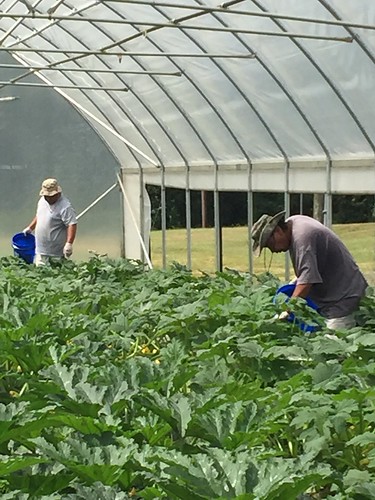
This post is part of the Science Tuesday feature series on the USDA blog. Check back each week as we showcase stories and news from USDA’s rich science and research portfolio.
For thousands of years Native Americans thrived in self-sustaining communities. Now, many have to make do with whatever food and basic goods can be hauled in by truck.
“The Oglala Lakota people thrived for centuries as a self-sustaining community. They utilized the bounty of their local environment to provide food and shelter,” said Nick Hernandez, Community Food Project director at South Dakota’s Pine Ridge Reservation. “In modern times, 95 percent of food and basic goods are hauled onto the Oglala Lakota Nation, perpetuating a phenomenon known as a ‘food desert’.”
Food deserts are locations without ready access to fresh, healthy, and affordable foods. USDA’s National Institute of Food and Agriculture (NIFA) is working to eradicate food deserts through its Community Food Project (CFP) grants program. CFPs give communities the funds they need to re-establish local control over their food supply.
“CFPs provide locally grown, culturally appropriate foods to the Native American community; foods that will help enhance their health and are familiar,” said Jane Clary Loveless, national program leader in NIFA’s Division of Nutrition.
Communities establish and manage their own projects, but there is one overarching goal for many in Indian Country.
“Food sovereignty is very important among many tribes today,” said John Hendrix, CFP project director for the Mississippi Band of Choctaw Indians. “While each tribe may take a different approach, the goal is to take an active role in the tribe’s local food system to improve access to culturally appropriate and healthy food.”
In his case, CFP funds are helping Choctaw Fresh Produce supply the community with fresh fruits and vegetables. Prior to the $300,000 grant, virtually none of the produce consumed on the reservation was grown there. The tribe has since constructed a greenhouse, three high tunnels (unheated greenhouse-like structures that protect crops and extend the growing season), a 10-acre fruit orchard, and a packing operation. By the end of the third year they should supply about 25 percent of the fruits and vegetables needed by programs that benefit low-income individuals.
On the Pine Ridge Reservation, Oglala Lakota are using their $375,000 CFP grant to construct greenhouses and raise poultry to increase the community’s access to healthy local foods – but Hernandez also has an eye to the future.
“Food deserts disproportionately affect socially segregated groups, specifically single mothers, children, and elderly living in underprivileged neighborhoods,” Hernandez said. “Our intent is to create opportunity for the generation now and seven generations to come.”
Project goals include a sustainable agriculture demonstration farm and education center that will include a food education program, workforce development training, and a curriculum to build the capacity of aspiring farmers and ranchers.
NIFA invests in and advances agricultural research, education and extension and seeks to make transformative discoveries that solve societal challenges.
